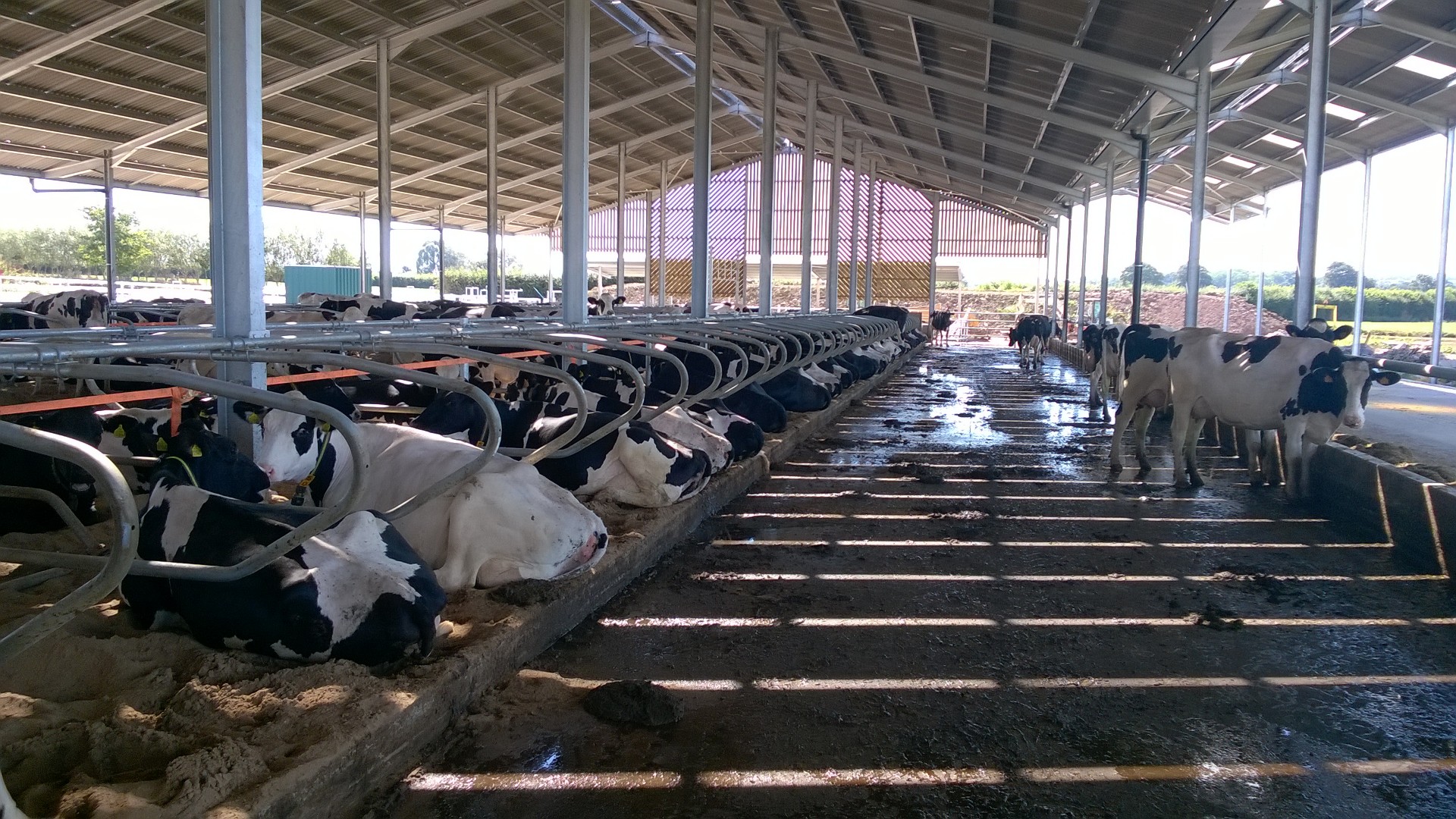- Home
- Knowledge library
- Dairy cow housing design to prevent environmental mastitis during lactation
Dairy cow housing design to prevent environmental mastitis during lactation
Fundamental issues with building design, ventilation and stocking rate can often mean new infection rates of environmental mastitis remain high, particularly in higher-yielding herds. However, mastitis control can be maintained with a focus on bedding management and pre-milking teat disinfection.
Environmental mastitis: the housed dairy cow
Ventilation of lactating cow housing
In herds in which environmental infections in lactation are the main cause of mastitis, it is worth checking ventilation.
Ventilation
Good ventilation in the milking herd’s housing provides a drier atmosphere and reduces bacterial numbers on the bedding by reducing pathogen survival time. The outlet and inlet must be assessed and optimised to enable efficient natural ventilation (known as the ‘stack effect’).
The image below shows an early lactation group being housed in a shed characterised by a wide, open ridge and open sides, to maximise air outlet and inlet, and allow the stack effect to function and the building to ventilate naturally. Note the absence of skylights to ensure that heat is not trapped in the building during warmer months of the year.

Image courtesy and copyright of Ian Ohnstad – The Dairy Group.
Mechanical ventilation
Mechanical ventilation should be considered where natural ventilation may be insufficient and where the impact of heat stress, particularly in summer months, has been shown to increase the rate of new mastitis infections in lactation.
Access to feed and water
Cows need enough trough space to avoid unnecessary pressure on feed or water intakes. If cows don’t have enough space, this can lead to crowding and competition, both of which may increase the risk of faecal soiling and will increase stress.
Adequate feeding space
Adequate feeding space is essential to avoid competition between cows and build-up of dung in the passageways as cows are queueing to feed. It is also important to maximise cows’ dry matter intake and, therefore, energy input for better immune function.
A feed space of 0.6 m is approximately half a cubicle width. This means that, where there are two cubicle rows per feed face, cows will have sufficient feed trough space. If there are three cubicle rows per feed face, cows will not have enough feed space.
Most Holstein-Friesian cows will need at least 0.7 m of feed space. Try to give more feeding space to cows in early lactation – many top-performing herds are offering feed space closer to 1 m.
Adequate water trough space
Water troughs must not be sited close to or on bedded areas and must be surrounded by a clean, well-drained surface in the loafing or feed areas.
Clean water is essential, as bacteria will survive in water for varying lengths of time. Cows will also drink more water if it’s clean. Cows should have access to water at all times, including before and after milking.
It’s important to ensure:
- There is at least 0.6 m of feed space per cow in total for access to forage, concentrate or complete diet portions of the cow’s feed
- There is water trough space of greater than 10 cm per cow at all stages of the production cycle
- Areas around water trough are clean and well drained
Loafing areas
Loafing areas are non-lying, non-passageway, non-feeding areas that allow cows freedom to express normal behaviour, such as grooming and heat expression. They also allow cows to spread out, reducing faecal contamination of the housing areas and bullying stress. The total loafing area (exclusive of lying areas) must provide a space allowance of 3.0 m² per cow.
The importance of loafing space cannot be over-emphasised, particularly in low cell count, high-yielding herds that struggle to control opportunistic environmental infection in milking cow groups.
There should be sufficient grip and grooving of concrete in all areas to prevent the risk of slipping and injury, and well-designed yards and alleys that minimise the risk.
Slurry management
A 700 kg cow produces over 60 litres of slurry per day, most of which will end up in feed and cubicle access passages. Cows standing, walking and lying in slurry will become dirty, with softer hooves, and will be at a higher risk of disease. Keeping floors, passageways and hardstanding areas as clean as is practicably possible at all times will reduce the risk of health problems.
You can also find further information on cow flow, housing systems, design, slurry and waste management.
It’s important to ensure:
- All alleyways, loafing and feeding areas are scraped out at least twice daily
- If using automatic scrapers, the slurry never overflows the sides of the scrapers, and scrapers must work often enough to keep alleyways clean
Useful links
Dairy cow cubicle housing design to control environmental mastitis in lactation
Loose yard management to control environmental mastitis in dairy cows
If you would like a hard copy of the Control of environmental mastitis guide please contact publications@ahdb.org.uk or call 0247 799 0069.

